This year, I have heard a few bits and pieces about wool ironing mats – these squishy, felted wool mats that supposedly are more efficient at pressing your fabric and sewing as the wool retains the heat so it presses from the top and bottom in one go. I’m not going to lie, I kinda gave them an eye squint of mild skepticism, but also the curiosity of “I guess they must somehow work, right? Because I know wool has some kind of magical heat conducting properties with clothes and doonas.” Oh yes, my inner monologue gets quite scientific, ha. Well, spoiler alert, I’m here to tell you that they do!
Jon from Precision Quilting Tools contacted me and asked if I’d like to review their wool ironing mat, to which I of course said yes (see aforementioned curiosity). While I was waiting for it to arrive, I had read Amy’s review of the mat, and my eagerness increased. I really wanted to compare with my ironing board as to how the wool ironing mat truly performs.
The project tasked to this scientific endeavour were the Ripples blocks for my quilting bee queen, Eleri. While I was making the half-square triangles, I pressed some on the wool ironing mat, and some on my regular ironing board. There is a difference!
The HST on the left was pressed on the wool ironing mat, and the one on the right was pressed on the normal ironing board. Both were pressed for the usual amount of time that I do. But you can see that the seam on the left HST is sitting much flatter! And in case you’re thinking that I somehow fudged the results by smoothing the left HST more on top of the mat (which also makes an amazing design mat too – nice and grippy!), I can tell you that I didn’t, but here’s one of HSTs on the table top instead. Left HSTs were pressed on the wool ironing mat, and the right HSTs were pressed on the ironing board.
And if you’d like a video close up for further reassurance, check out the Reviews highlights on my Instagram Stories where I get the phone up nice and close.
You can certainly feel the difference, too. The fabric feels more crisp, almost as if it had been starched; it holds the ironed flatness really well. Which makes sewing the HSTs together much easier! And then when it came to pressing open the seams between the rows, ironing over the bulkier seam intersections was a little easier too, having the added heat from underneath.
Other thoughts… The wool ironing mat itself is very lightweight, making it extremely portable. They would make for brilliant ironing stations at sewing days or retreats because of the lightweight portability. They’re also quite thick, over 1/2″ thick, so you don’t have any worries about the heat getting through the other side and damaging surfaces. Another bonus, as I mentioned before, is that the felted wool also makes for the perfect “design board”. And as such, after a lot of use, you will want to use a lint roller to get any loose threads off of it. Like Amy, I did occasionally get a faint smell of warm wool, but certainly nothing unpleasant – more like warm clothes pulled fresh from the dryer.
The mats come in three different sizes – 9″ x 9″, 17″ x 17″, and 17″ x 24″. I received the larger size, and it’s perfect for having a table top ironing station, like I do, rather than a big ironing board. It’s also a good size as you can easily press fat quarters on it! The smaller sizes would be better for having a personal, portable ironing mat for sewing days or retreats. So if your friends and family are asking for what to get you for Christmas… well, I know of one great idea!
I received the mat for the purposes of review. All opinions and wonky HST points are 100% my own.
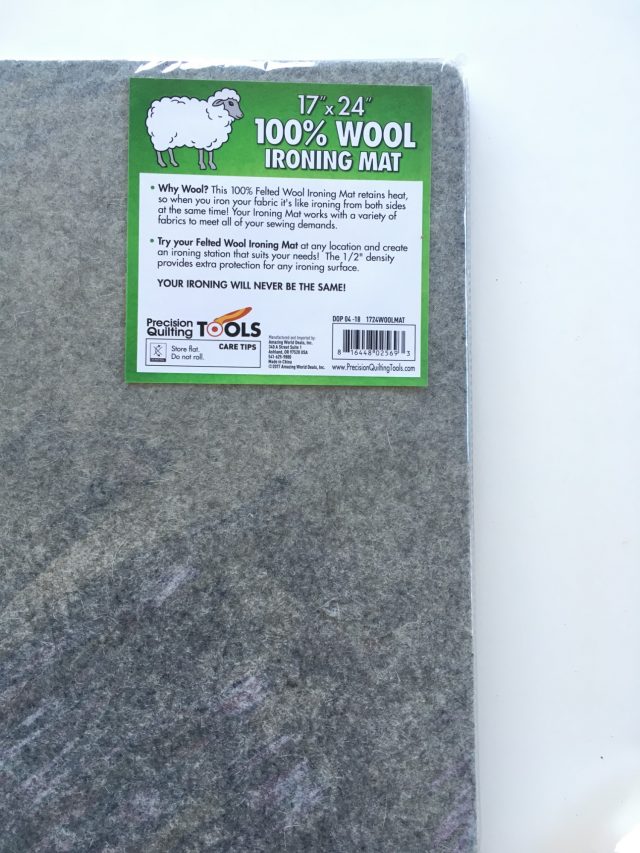
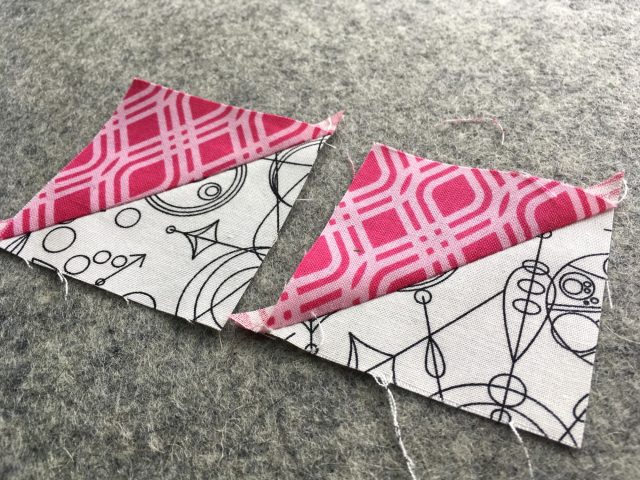
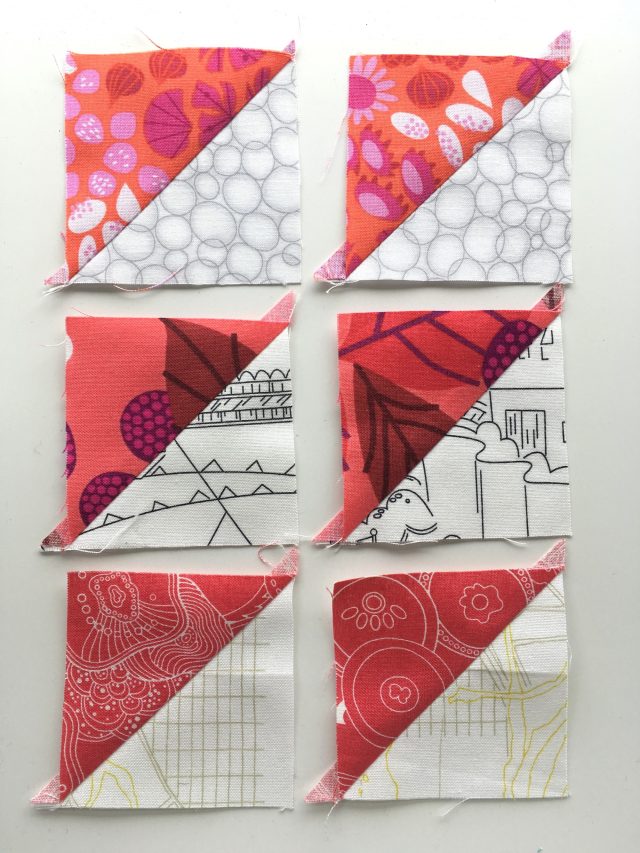
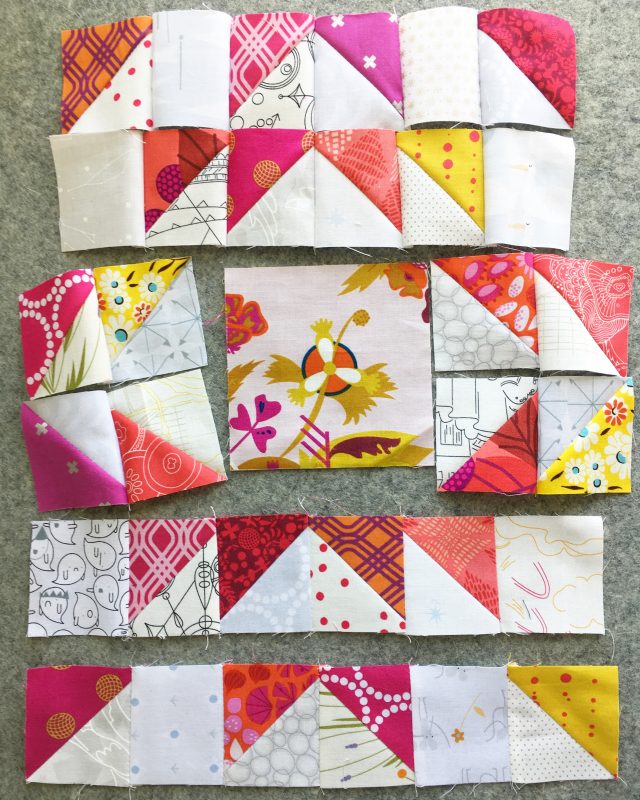
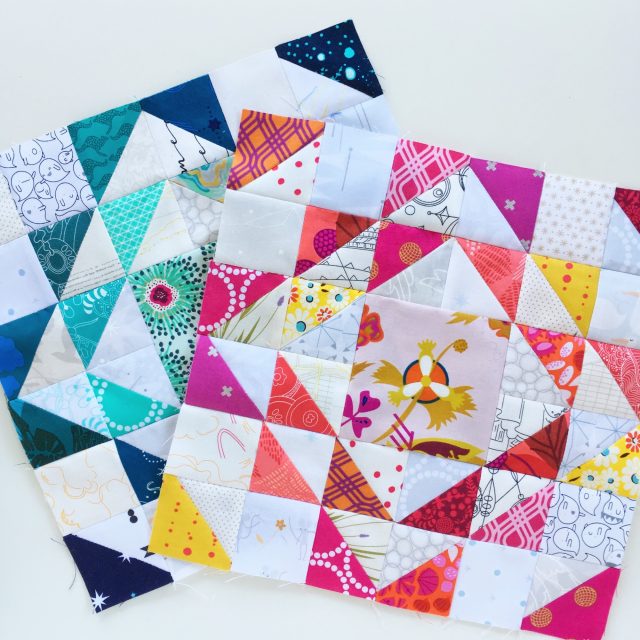
Eva says
Thank you for the review. I’ve been looking to get one of these mats as well 😉 Was leaning towards the 17 x 17 I know that at the end of the day it’s a personal preference, but do you see any advantages in getting the larger 17 X 24 ?
Alyce says
My pleasure! Hmmm… the main advantage is that the larger size fits fat quarters if you ever try and press them all in one go and/or yardage cut off the bolt and folded in half. The 17×17 would still work for FQs though, just half at a time.
Eva says
Thanks Alyce 🙂 Of course! I was mostly thinking that the 17×17 would be fine for a 12×12 block, but I think the extra length of the mat would be really nice for ironing strips and fat quarters – more room for EPP projects too … I’ll go with the larger size.
Alyce says
Ah yes, bigger projects, definitely!
Emily says
Thanks for this review! I really appreciate all the visual results! I haven’t seen wool pressing mats but now I am inruiged! I have been keeping a running Christmas quilty wish list, I’m going to add this!
Alyce says
My pleasure! I knew that seeing visual results would be important to ME as a reader, so that’s what I tried to do, rather than just taking my word for it.
Linda Drecchio says
OK so I’m going to be one that says “not for me” … In my opinion, there was little difference between the two samples, not enough for me to think it makes a big difference. I use my ironing board with a good Rowenta iron and steam. The iron itself “irons both sides”. Besides, I’d wind up putting this on my ironing board to iron on it! Doesn’t make much sense to me! I’d rather spend my money on an even better iron instead of a mat.
Alyce says
Totally fair!
Pam says
I recently purchased a new ironing board cover which has the heat-reflective coating. I just received an offer for a 1/4″ wool ironing board mat which I can cut to size to go under the cover. Would it be redundant to use the wool mat under the heat-reflective coated cover? I keep my board up and use it daily in quilting projects.
Thank you.
Alyce says
I would say that the heat-reflective coating would mean the heat would not get through to the wool mat for the mat to do the job properly. You’d want to put the wool mat on top.